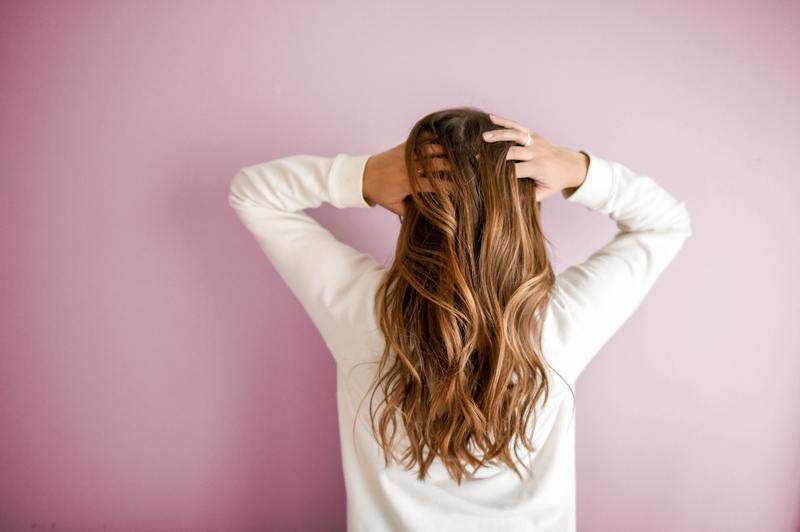Nobody wants their hair to be moldy or mildewed. To avoid this situation, here is a guide on how to get rid of mold in your hair.
Unfortunately, the convenience of having your hair damp and covered or put up for long periods can lead to a moldy hair disaster. Musty, mildew-smelling hair is frequent among those who wear dreadlocks, wigs, weaves, braids, buns, ponytails, or any other style that inhibits air movement to the coat while it is still damp.

Improper washing, rinsing, and drying the hair after washing and insufficient shampooing frequency are common causes of mildewed or moldy hair. Here are some helpful articles about how to treat sooty mold and what can a mold do to a baby for additional precautions.
Washing The Mold Off Your Hair
Step #1. We highly suggest that you use a clarifying shampoo to remove mold or mildew from hair. Choose a clarifying shampoo that contains sulfates.
Detergents such as ammonium and sodium lauryl sulfate will help strip and remove product buildup from the hair.
Step #2. To prepare your hair for shampooing, properly rinse it under warm water and then a hydrating deep conditioner treatment.
Tip: Before styling, rinse the hair and let it air dry thoroughly. Since mold, on the other hand, has been shown to respond to essential oil spray treatments.
These treatments are hair-friendly. Mold-fighting oils include tea tree oil, a rather pricey and smelly essential oil, and grapefruit seed oil that is odorless and less expensive.
Step #3. In a mixing bowl, dilute 2 cups of water, 20 drops of grapefruit oil, and 2 tbsp of tea tree oil.
Step #4. Transfer the solution to a clean spraying bottle and apply the solution to areas where mold is seen. The water dilution should assist in masking the pungent odor of the tea tree oil, and each mixture only needs a small amount to solve most mold problems.
Note: Vinegar is another typical mold-removal therapy that, when diluted, is safe to apply on the hair.
Is it possible for mildew or mold to develop on wet hair?
Mildew is caused by moisture that remains trapped inside your hair shaft after it has dried. Mold spores will be drawn to your damp hair and will build their home in your ponytail, bun, or style if you don’t allow it to dry with warm air rather than air drying.
Is it possible to remove mold from dreadlocks?
If your dreadlocks smell like mildew, mold, a sweaty gym bag, a wet dog, or anything else, you most likely have dread rot or mold growing in your locks. While many/most of the mold that is alive and growing within the dreadlocks can theoretically be killed, it can only be removed mechanically by cutting or combing.
Why does my hair continue to stink even after I wash it?
Your scalp stinks because of the time you didn’t wash your hair. Many individuals believe that a dry scalp causes dandruff, so they wash their hair less frequently.
This, however, is a fallacy. Lack of bathing, combined with an inflamed scalp, creates a breeding environment for bacteria and, as a result, odor.
Is it true that soaking your hair causes fungus?
While sleeping with damp hair won’t even give you a cold, it does increase your chances of having a fungal infection of the scalp. Fungi like Malassezia can cause dandruff or dermatitis, and experts recommend sleeping with dry hair whenever possible.
Is it true that vinegar kills mold?
White vinegar is a weak acid that has been shown to kill 82% of mold varieties and stave off mold outbreaks.
Refill a spray bottle halfway with white distilled vinegar. It’s best not to dilute the vinegar because mold is such a stubborn force.
In its many forms, the acidity in vinegar can help eliminate bacteria and fungus growth on your scalp and wash away any buildup from hair-care products, whereas shampoos are excessively alkaline in pH. Mix apple cider vinegar and water in a 1:3 ratio (with water making up most of the combination.)
Apply the vinegar to your scalp at the start of your shower, and then rinse it off at the finish. Repeat this procedure until you get the desired outcome.
Conclusion
Nothing is more unpleasant than feeling dirty, grimy, or “germy” after a long day. Consider this: you frequently share restricted areas with a large number of people.
Hardly anything beats a relaxing shower after being in these environments, whether it’s at work, the gym, school, on a flight, or in a rental car.
So, whether you work in construction, doctor’s office, on an airplane, in an old school, in humid or damp conditions, or have to spend time in crowded areas, there is a solution. If you follow the techniques above, you’ll be able to know how to get rid of mold in your hair.
